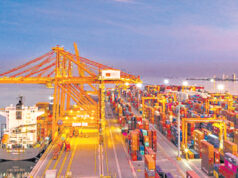Protecting your valuables against misfortune
Nonlife insurance, which as the name suggests, is a form of property and casualty insurance that does not cover an individual’s life. Many a people possess it in one form or another, through fire insurance, motor-car insurance, or home insurance, and in a lot of ways, it is a valuable way for Filipinos to safeguard their possessions from unexpected misfortune. It is also known as general insurance, or property and casualty insurance.
“Property and casualty insurance is an agreement whereby one undertakes for a consideration to indemnify another against loss, damage or liability arising from an unknown or contingent event,” personal finance expert Randell Tiongson wrote in his Web site.
“For the insured, it means that the agreement is merely to help him recover what was actually lost due to the unknown or contingent event. A contract of indemnity is therefore exclusive to property insurance.”
In other words, nonlife insurance policies protect (through monetary compensation) the insured against unfortunate events or accidents. While life insurance provides monetary compensation towards the policy holder’s beneficiaries in the event of fatal accidents or sudden illness, property and casualty insurance protect against events like fire, theft, or natural calamities.
Nonlife insurance is classified into different categories, and their value is dependent on the policy holder’s situation and preferences. For instance, a salesman who has to travel a lot for work and who rents an apartment gains much more value from car and travel insurance than home insurance. As any person can hold many types, there is a great deal of flexibility in choosing which ones are best for any given situation.
Car Insurance
One of the most common types of nonlife insurance is car insurance.
“As the name itself says, car insurance insures your car (and the riders) in the event of accidents resulting from both natural (e.g. typhoons, floods, etc.) and man-made (e.g. theft, exterior and interior damages) occurrences,” Mr. Tiongson wrote.
“Comprehensive car insurance includes protection against accidents and theft, and provides roadside and sometimes medical assistance and coverage as well.”
He added that for the average annual cost of car insurance for a Toyota Vios, it will cost policy owners around P18,000. With the recent prices of the Toyota Vios settling around P600,000 to over a million pesos, serious repairs or parts replacements for vehicle owners can reach over a hundred thousand pesos. In the case of the car getting totaled and needs replacement, the premium for car insurance would be several times cheaper than getting a new car. For frequent travelers, or those who drive on accident-prone roads, it pays to have car insurance. Car owners, meanwhile, are obligated by law to apply for car insurance.
Home Insurance
Much like how car insurance functions, home insurance provides protection for homeowners. Real estate is one of the most popular investments for Filipinos.
“Owning a home is part of the Filipino dream, and real estate is the preferable investment (over paper assets) in this country,” Mr. Tiongson wrote.
With how important real estate is viewed as property in the country, he added, it should be a given to protect one’s home at all costs. However, many home owners for whatever reason are averse to getting comprehensive home insurance policies, especially those with expensive annual premiums.
“You may be thinking that your house is sturdy, made of concrete, and has a stable foundation, so why bother with home insurance?” Mr. Tiongson wrote.
“The annual premiums are a small price to pay in the event that you make a claim. An annual premium in the five-digit range will give you a coverage valued in the millions. Home insurance provides coverage from natural disasters, robberies and water damages, and may offer additional benefits such as a relocation allowance, legal assistance, and medical (ICU) assistance.”
Home insurance policies are best suited for Filipinos who live in areas prone to natural disasters like typhoons, floods and earthquakes. It may also be worthwhile for the owners of secondhand houses to get insurance if the previous homeowners neglected the maintenance of amenities to protect against water leaks, pipe damages, rot and structural failure.
Travel Insurance
When buying plane tickets, many Filipinos dismiss the value of travel insurance, believing it to simply be unnecessary and expensive. For an average economy flight, travel insurance usually costs around P800 to P1,000 to cover a single short trip, and covers unforeseen events like flight delays, trip cancellations, lost luggage, and the like.
Travel insurance is doubly more valuable for those traveling with precious or fragile items in their luggage, or for those who are traveling under a carrier with a bad reputation for unreliable service.
“If you plan to travel far away (e.g. from Southeast Asia to Europe) and expect to buy a lot of new belongings, maybe you should consider travel insurance for this once-in-a-lifetime trip,” Mr. Tiongson noted. — Bjorn Biel M. Beltran



